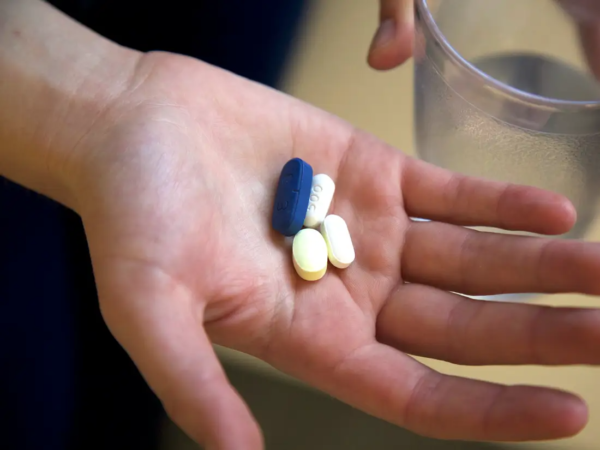Syphilis Disease is a sexually transmitted infection (STI) caused by a bacterium called Treponema pallidum. It initially manifests itself in the appearance of non-painful ulceration in the penis, vagina, or anus. If left untreated, syphilis can cause serious health problems, affecting the heart and brain. Syphilis was an important cause of disability and mortality but has been much less widespread since the discovery of antibiotics in 1945.
The disease is uncommon in Canada but the number of people infected has increased significantly since 1997, suggesting that people do not adequately protect themselves during intercourse. In 2006, not less than 1,500 cases were reported in Canada. The most affected are men aged 25 to 39 years.
Syphilis Disease Causes
Syphilis transmitted during oral, anal, or genital sex with a partner who infected. More rarely, transmitted by the exchange of syringes or by a cutaneous lesion. Finally, it could be transmitted from mother to child during pregnancy.
Syphilis Complications
- Untreated syphilis is destructive and causes many complications such as internal or external lesions, cardiovascular disorders, and serious mental health. It may, sometimes, lead to death.
- Having syphilis also increases the risk of contracting HIV.

When to Consult your Doctor?
If you have unprotected sexual intercourse, or if you experience ulcers, redness, or pimples on your genitals, consult your doctor to take the right screening tests.
Syphilis Symptoms
Syphilis has three stages and a latency period. The primary, secondary, and early latent stages of syphilis considered infectious. Each stage has different symptoms.
1. Primary stage
Early symptoms occur 3 to 90 days after infection, but usually 3 weeks.
At first, the infection takes on the appearance of a red button. Then the bacteria multiply and end up creating one or more non-painful ulcers at the site of infection, usually in the genital, anal, or throat area. This ulcer called a syphilitic chancre. It can be seen on the penis, but easily hidden in the vagina or anus, especially since it is painless. Most infected persons develop only one chancre, but some develop several. The wound eventually subsides of its own accord in 1 or 2 months. If it has not been treated, it does not mean that the infection cured.

2. Secondary stage
When untreated, syphilis develops. From 2 to 10 weeks after the onset of ulcers, the following symptoms occur:
- Fever, fatigue, headache, and muscle aches
- Hair loss (alopecia)
- Redness and rash on the mucous membranes and skin
- Inflammation of the ganglia
- Inflammation of the uveitis, the vascularized part of the eye, or the retina (retinitis)
These symptoms may disappear by themselves but this does not mean that the infection cured. They can also manifest and reappear intermittently, for months or even years.

Period of latency
After about two years, syphilis enters a state of latency, a period when no symptoms appear. However, infection can still develop. This period can last from one to 30 years.
3. Tertiary stage
If untreated, 15-30% of people infected with syphilis will suffer from very serious symptoms that may even lead to death in some cases:
- Cardiovascular syphilis (inflammation of the aorta, aneurysm or aortic stenosis, etc.)
- Neurological Syphilis (stroke, meningitis, deafness, visual disturbances, headache, dizziness, personality change, dementia, etc.)
- Congenital syphilis: The Treponema transmitted by the infected mother through the placenta and will lead to spontaneous abortions, neonatal deaths. Most newborn infants will have no symptoms at birth, but these will appear within three to four months

People at Risk and Preventing Syphilis
1. People at Risk
- Men who have sex with men
- People who have unprotected sex
- Those who have multiple sexual partners
- People living with HIV or other STIs
- Injecting drug users and their partners

2. Prevention
Prevention aims to reduce the incidence of syphilis by preventing transmission of the bacteria.
Basic Preventive Measures
Proper use of condoms helps prevent the transmission of syphilis. Condoms or dental dams may also serve as a means of protection during oral sex.
- Screening measures
Systematic Screening for Syphilis at the First Pregnancy Visit: Given the resurgence of syphilis in Canada, but also in the United States and Europe, systematic screening is paramount for all pregnant women.
Screening for unprotected sex
A screening test helps avoid transmission of infection to new partners. In the case of a positive result, you must notify any person you have had sex with. This person will have to undergo a screening test and be treated, if necessary. Syphilis is also detected through a blood test.

Medical treatments and complementary approaches to syphilis
- Medical Treatments
Syphilis treated with antibiotics, usually penicillin, by intramuscular injection. In a case of allergy to penicillin, other antibiotics are available. If the infection has lasted less than 1 year, it is possible that a single dose treatment is sufficient. New blood tests performed as a result of the treatment to see if the antibiotics have been effective. Immunosuppressed people, especially those with HIV may require longer-term treatment.
- Complementary Approaches
No complementary approach can replace antibiotics in the treatment of syphilis.


